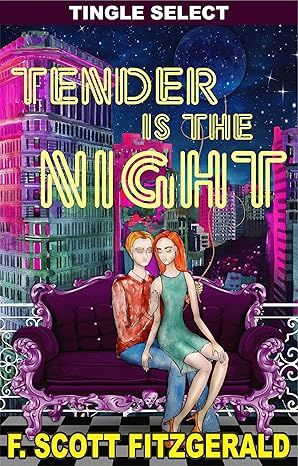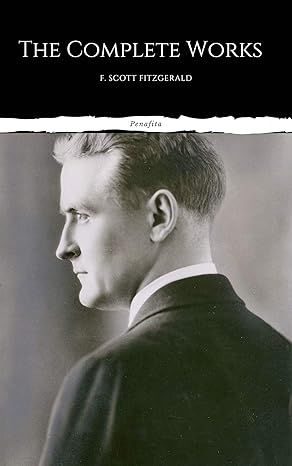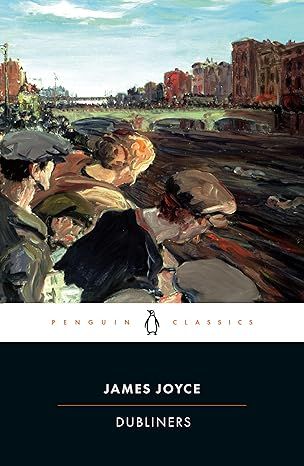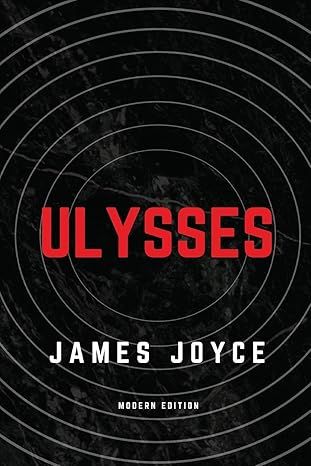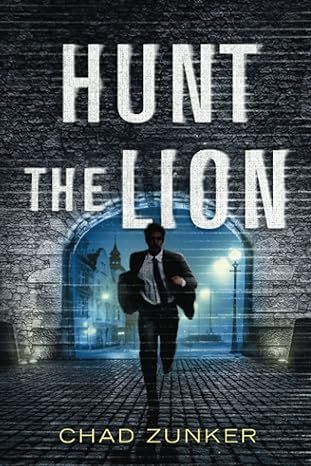The Sun Also Rises: The Authorized Edition
4
-
13,874 ratings
American Journalist Jake Barnes is desperately in love with the beautiful Lady Brett Ashley. She moves seductively through the seemingly glamorous milieu of American and British expats, loving, living and partying in Paris in the 1920's. They're a hedonistic generation, marked by the violence and privations of WW1, in pursuit of adventure.
Part of the Macmillan Collector’s Library; a series of stunning, cloth-bound, pocket-sized classics with gold foiled edges and ribbon markers. These beautiful books make perfect gifts or a treat for any book lover.
Ever restless, Jake and Lady Brett travel together with a disparate group of friends through France to Pamplona in Spain. There they are taken up by the vitality and the spectacle of the famous Fiesta of St Fermin. In a city famous for its bullfighting, Jake is plagued by jealousy and real love seems forever out of reach. The drama of the bullfighting is captured on the page by Hemingway with brutal realism in a remarkable novel that secured his place as an astonishing new writer and a voice for his generation.
Kindle
$0.00
Available instantly
Audiobook
$0.00
with membership trial
Hardcover
$9.99
Paperback
$10.79
Ships from
Amazon.com
Payment
Secure transaction
ISBN-10
0743297334
ISBN-13
978-0743297332
Print length
251 pages
Language
English
Publisher
Scribner
Publication date
October 16, 2006
Dimensions
5.25 x 0.6 x 8 inches
Item weight
6.2 ounces
Product details
ASIN :
B0C8B4KLJ7
File size :
822 KB
Text-to-speech :
Enabled
Screen reader :
Supported
Enhanced typesetting :
Enabled
X-Ray :
Not Enabled
Word wise :
Enabled
Editorial reviews
“An absorbing, beautifully and tenderly absurd, heartbreaking narrative... a truly gripping story… magnificent.” —The New York Times
“The Sun Also Rises is a novel of great silence. Something central is hidden, which the reader discovers little by little. The characters are rich, interesting, fascinating, and a little bit tragic, as Hemingway's characters always are.” —Mario Vargas Llosa
“Hemingway writes as if he had never read anybody’s writing, as if he had fashioned the art of writing himself.” —The Atlantic
“The Sun Also Rises introduced me to a kind of exotica, a glamour, a life that I couldn’t believe. I was seduced by it.” —Edna O’Brien
Sample
Book I
Chapter 1
Robert Cohn was once middleweight boxing champion of Princeton. Do not think that I am very much impressed by that as a boxing title, but it meant a lot to Cohn. He cared nothing for boxing, in fact he disliked it, but he learned it painfully and thoroughly to counteract the feeling of inferiority and shyness he had felt on being treated as a Jew at Princeton. There was a certain inner comfort in knowing he could knock down anybody who was snooty to him, although, being very shy and a thoroughly nice boy, he never fought except in the gym. He was Spider Kelly’s star pupil. Spider Kelly taught all his young gentlemen to box like featherweights, no matter whether they weighed one hundred and five or two hundred and five pounds. But it seemed to fit Cohn. He was really very fast. He was so good that Spider promptly overmatched him and got his nose permanently flattened. This increased Cohn’s distaste for boxing, but it gave him a certain satisfaction of some strange sort, and it certainly improved his nose. In his last year at Princeton he read too much and took to wearing spectacles. I never met any one of his class who remembered him. They did not even remember that he was middleweight boxing champion.
I mistrust all frank and simple people, especially when their stories hold together, and I always had a suspicion that perhaps Robert Cohn had never been middleweight boxing champion, and that perhaps a horse had stepped on his face, or that maybe his mother had been frightened or seen something, or that he had, maybe, bumped into something as a young child, but I finally had somebody verify the story from Spider Kelly. Spider Kelly not only remembered Cohn. He had often wondered what had become of him.
Robert Cohn was a member, through his father, of one of the richest Jewish families in New York, and through his mother of one of the oldest. At the military school where he prepped for Princeton, and played a very good end on the football team, no one had made him race–conscious. No one had ever made him feel he was a Jew, and hence any different from anybody else, until he went to Princeton. He was a nice boy, a friendly boy, and very shy, and it made him bitter. He took it out in boxing, and he came out of Princeton with painful self–consciousness and the flattened nose, and was married by the first girl who was nice to him. He was married five years, had three children, lost most of the fifty thousand dollars his father left him, the balance of the estate having gone to his mother, hardened into a rather unattractive mould under domestic unhappiness with a rich wife; and just when he had made up his mind to leave his wife she left him and went off with a miniature–painter. As he had been thinking for months about leaving his wife and had not done it because it would be too cruel to deprive her of himself, her departure was a very healthful shock.
Read more
About the authors
Ernest Hemingway
Ernest Hemingway was born in 1899. His father was a doctor and he was the second of six children. Their home was at Oak Park, a Chicago suburb.
In 1917, Hemingway joined the Kansas City Star as a cub reporter. The following year, he volunteered as an ambulance driver on the Italian front, where he was badly wounded but decorated for his services. He returned to America in 1919, and married in 1921. In 1922, he reported on the Greco-Turkish war before resigning from journalism to devote himself to fiction. He settled in Paris where he renewed his earlier friendships with such fellow-American expatriates as Ezra Pound and Gertrude Stein. Their encouragement and criticism were to play a valuable part in the formation of his style.
Read more
Reviews
Customer reviews
4 out of 5
13,874 global ratings
Glynn Young
5
Reading a classic for the first time
Reviewed in the United States on August 7, 2023
Verified Purchase
My eighth-grade literature teacher was a Hemingway fan. But she faced a problem. She’d already gotten into trouble for assigning “The Lord of the Flies” and “The Day of the Triffids” to our all-boys class. And she loved Hemingway, but she knew he might be problematic. Her solution was to have us read “The Old Man and the Sea,” which had won the Pulitzer Prize in 1952 and whose author had won the Nobel Prize for literature in 1954. How could the principal and parents argue with that?
The author’s name you did not mention in her presence was F. Scott Fitzgerald.
My American literature teacher during my junior year in high school was squarely in Fitzgerald’s camp. Hemingway was not a writer, she sniffed; at best you might consider him a journalist. She was eloquent in her praise of “The Great Gatsby,” but “The Old Man and the Sea” proved you couldn’t trust the judgment of the Pulitzer Prize jurors. And Hemingway wrote about all kinds of unseemly, unmentionable things. She didn’t say anything about Fitzgerald’s Tender is the Night, which, one might argue, has an unseemly, unmentionable thing at its heart.
I had never read Hemingway’s “The Sun Also Rises,” which has at its core an unseemly, unmentionable thing, at least in the 1920s – a man’s impotence due to a war injury. The man is Jake Barnes, who works as a journalist (much like Hemingway did) in Paris. He speaks French and Spanish, in addition to his native American English, and he does what Americans of the Lost Generation do in Paris of the 1920s – visit night clubs and drink a lot. Barnes is in love with Lady Brett Ashley, an Englishwoman in the process of divorce and re-marriage, who also has a string of affairs. Because everyone loves Brett Ashley, everyone forgives her affairs. Even her fiancé.
We suspect, but can’t prove, that Lady Ashley’s affairs have everything to do with the fact that she loves Barnes, but it is a love that can never be consummated. Everyone else becomes a substitute.
Barnes and his circle travel to Spain for the annual running of the bulls and the bullfights. Barnes himself and his friend Bill also go for the trout fishing (Hemingway liked fishing stories). And it is there, in Spain, that the story reaches its crisis, although Hemingway’s famous writing style almost disguises the fact that the story is building toward a crisis. The bullfights are a metaphor, a plot development device, and a symbol for what the story is about. Barnes’ impotence, though barely mentioned, is also a symbol of a man who can’t fully live life and is consigned to living it vicariously through others (I’m not sure if it’s a commentary on journalism or not).
“The Sun Also Rises” is almost a century old (first published in 1926), but it reads almost like a contemporary novel. Hemingway wrote sparingly; he didn’t like many adjectives or adverbs. He also wrote almost stepwise and very matter-of-factly, not unlike the way journalists used to write (“He picked up his glass; he drank from his glass; he put the glass down.”).
It’s significant that, with the exception of Brett Ashley, all of the characters are male, and even Ashley has a male name. This masculine focus has made Hemingway something of a persona non grata in many academic and literary circles today. I was also somewhat surprised at the rather open anti-Semitism that focuses on one character.
“The Sun Also Rises” builds slowly. You don’t realize the grip the story has on you until deep into the narrative. The people are indeed card-carrying members of the Lost Generation. They can’t have what they desire most, but that doesn’t stop them from trying to obtain it.
Read more
10 people found this helpful
Jerez
5
As Humbled Observer
Reviewed in the United States on April 20, 2024
Verified Purchase
Upon closing The Sun Also Rises, I felt a neutral, pensive emotion wash over me—a sense that perhaps something had eluded me within the story's layers. Ernest Hemingway's celebrated iceberg theory is on full display, enriching the narrative with subtleties and implications that hint at deeper meanings beneath the surface. The narrative captures the essence of the post-World War I era, reflecting on the lives of those seeking to escape their world's harsh realities. The depiction of a life unburdened by financial constraints offers a window into the pursuits and distractions of the "Lost Generation," a term that resonates through Hemingway's portrayal of his characters' aimless wanderings. The Sun Also Rises is a complex work that leaves the reader grappling with its central themes. It's a lesson in how not to choose and treat friends and an exploration of inner circles and personal integrity. The book's complexity is akin to that of a deeply engaging film, offering a rich tapestry of interactions that challenge the observer to look beyond the surface. The book's ending, where Jake returns to Brett following her summoning, stands out. This moment raises questions about the ideals of masculinity and commitment. Jake's character, though seemingly dull, presents a profound reflection on personal sacrifice and adaptation. It prompts me to consider my life choices if faced with similar limitations. The Sun Also Rises sparked deep contemplation in me, particularly on toxic relationships and the elusiveness of truth, which seems to only surface in moments of inebriation. Jake's travels and his attempts to find peace away from drama prompted profound reflections on my own life and the subtle but significant moments that shape our existence. Inspired by this classic, I am compelled to delve deeper into the world of classic fiction, possibly revisiting The Great Gatsby to compare thematic explorations. Hemingway's work encourages a thoughtful engagement with the text, demanding a careful consideration of its every word and implication. The Sun Also Rises is not a book to be read once and forgotten, but a multifaceted experience that invites multiple readings. Its intricate construction and the masterful subtlety of Hemingway's prose reveal new depths with each revisit, making it a compelling choice for those who enjoy thoughtful engagement with a text.
Read more
4 people found this helpful
Cowgirl In the Sand
5
Nothing is easy; the world is a hard place; enjoying it is almost impossible if your eyes are open
Reviewed in the United States on February 21, 2014
Verified Purchase
There is no point to reading Hemingway, particularly The Sun Also Rises, if you are looking merely for entertainment. The entire book is a denouncement of people who seek only entertainment and purposefully tries to exclude you from enjoying the book. Just don't read it if you read only for entertainment - you're already part of the Lost Generation, if that's what you're doing because, while you can deny it, that's you he is trying to capture in those dissolute spectators of the bullfight. They don't fight, they drink. In your case, reading is the same as drinking - a way to escape and be entertained. Hemingway and the proprietor of the bullfighter's hotel don't want you there. Go home. You're ruining it, he says.
Hemingway saw that people were not, as he had been taught as a child, becoming more and more capable of enjoying and producing peace and beauty. This was only true if you kept your head in the sand and tried to live in the suburbs. Hemingway's father had not yet shot himself, but his wife's father had - and he knew that, even in Midwestern America, the truth of life's very harsh realities could creep in. He adores the Spanish for maintaining a culture that permits the age old practice of tauromachia, bullfighting. It keeps people's heads on straight. It does not allow them to be ostriches. It is only natural that young Americans, raised to believe that the world is mostly entertainment and mostly constructed for their own enjoyment, would be drawn to a grittier cultural event - even if only briefly. The truly alive, though, become aficionados (in the Spanish sense) of the fights. They open their eyes to everything, particularly the specter of their own death.
Is it possible to enjoy contemplating death? One's own death? If you don't think it's possible, then this book is probably not for you. It is nothing like a horror story, it is not fake death made momentarily into an adrenalin rush, from which you can hide your face (you can hide your face while at the bullfights; you cannot hide from death itself).
Hemingway was born in 1899, just 4 years after certain historians had proclaimed the Closing of the American West (meaning: subduing of the last of the hunter-gatherer tribes and the complete expansion of "traditional American values" into the entire North American continent. He was raised with notions similar to what parents seem to want for their kids today, ideas about family life going well, everyone being happy, no drinking problems, no one acting out sexually, everyone gender-normal, and so on. Yet, he knew it wasn't so. He knew that humans are humans and there was nothing new under the sun.
Only men were sent into combat, young men with ideals in the case of World War I. Hemingway wants to capture the "Riau Riau" mindset that allows men, in a trancelike state, to rise up out of the trenches and charge forward while either being blown to bits or having other people's bits end up on your body (as happened to him). We are not going to live forever, are we? So why die as cowards? Die as a hero!
We don't push the heroism meme as much as it was pushed prior to World War I or World War II. We sort of gave up on that - perhaps in the 60's. Hemingway was part of the extinction of this kind of hero. Oh, people still invent games for themselves in which they travel, play sports, climb mountains, run marathons and so on, to still be "heroes" but without killing anything. We don't want heroism associated with killing or dying for a cause and yet, in all of human history, there it is still. People in Kiev (right or wrong) deciding to advance against the police and getting themselves shot - with others watching. People finding that even a shot to the leg isn't a good thing, and doesn't feel as heroic as it felt just a few minutes earlier, while preparing to advance on the enemy. People love having enemies, but the fact that for most 21st century American (and other Anglophone) readers, the "enemies" are now either things like evil corporations or the other people's rugby team, makes the world rather different.
In Hemingway's time, a huge war had just been fought, with people (much like oneself, by the way) as the real and true enemy. Germans had been part of the European community, just across the border from France, and now they were the enemy. Russia, once an ally, got itself a separate peace (and saved a bunch of Russians from being killed). Real people were killing real people with greater efficiency than ever before. But why?
Because people, men in particular, are designed this way. They get into groups, worked up into various frenzies, and stuff happens. Cultures that can channel the "stuff" into the bullring, well, perhaps that's a partial solution. Perhaps not (Hemingway will consider that in For Whom the Bell Tolls). Perhaps the bullring is merely a way of keeping people perpetually ready to rise up in violence and die for a cause. Maybe that's what all sports do (the ones that are true sports, Hemingway might say - he hated tennis).
If you are reading this book cold, you will probably have the reactions of many others (see the 3 star and lower reviews). I strongly suggest you read two volumes of Michael Reynolds's biography of Hemingway (the first two: Young Hemingway and the Paris Years). Read Paul Fussell's The Great War in Modern Memory before reading The Sun Also Rises. Don't just watch war movies, you will turn yourself into the very kind of reader that Hemingway is scathingly trying to insult.
Remember, Hemingway was trying to needle and agitate people who may be just like you or me, people who sit at home reading and have not been in the trenches, people who don't go to bullfights. How would he feel about modern audiences, with all the vegans and vegetarians and animal rights people within them? I think he would say that while the ambition is noble, that the understanding of the killing is more important than ever. If you are going to save animals (including people), you must understand human nature and human history. Human nature, on the ground, in all its somewhat eccentric and boring detail, must be at least noticed, and if possible, understood. Even changed.
When I first read The Sun, I deplored what I thought was the glorification of bullfighting and the cult of machismo. I was quite young and did not know much about the world then. I thought I would never read it again. When I read it the second time, I knew a lot more about Hemingway and I had read some of the 5 star reviews here. I realized I'd missed the whole point (and it isn't just about the symbolism - I got that part). Now, reading it again, slowly, a third time (because I am interested in understanding the craft of writing - so much is known about Hemingway's processes, reading it again with that information in mind is quite a new read), I realize that the intense literary criticism brought to bear on Hemingway, as well as his public persona, make this book completely amazing. It is a touchstone for not just one generation, but for almost a century's worth of modern readers. It changed how movies were made, it changed how people talked about reality.
Because once upon a time, people simply ignored the "black sheep" in every family, until they were piled up so high that someone had to notice that there were more black sheep than white sheep. The entire symbology of this black sheep/white sheep business had to be thrown over. Well brought up and well-to-do people were behaving outside of the standards of puritanical Christendom. Oh no. What to do? What to say? There were gay people! And women who liked sex! And people who had affairs! And prostitutes! And alcohol! (Even during prohibition!!!) Did the puritanical beliefs fail to take hold because the people were flawed? Or were the beliefs flawed? Or had anyone ever really believed them?
I think Hemingway leads us down many trails in answering these questions. He keeps his own cards close to his chest (he loved pictures of poker players and throwing dice; he spent money he didn't have on a painting of dice throwing by Masson). He knows that his parents seem to be "true believers" in the middle class, Midwestern ethos (he knows they will disapprove of the characters in the book, as so many readers here still do). He doesn't know, yet, that his father will shoot himself (and that two of his siblings will also be suicides). But he knows there's something amiss with the whole thing and in the end, prefers to slip back in time, and to another culture, to the corridas and the ancient dance with the bull. He knows that near Pamplona, some of the earliest art in the world depicts a human conception of a bull as powerful - but also the entire point of the Hunt. Even Hemingway, though, cannot make the actual bullfighter the protagonist of the novel, even if he intended him to be the Hero. Hemingway is too modern, himself, too much of a spectator to be a bullfighter - or, as he seems to say in The Sun, even a true aficionado.
Without true love for something, we are lost. The entire generation was lost, it had lost the possibility of true love. He thought he loved Hadley, during the period depicted in The Sun and in the period when he was writing it, he became painfully aware that he no longer loved Hadley in the same way - he had another "true love." He did not want to admit, ever, that he had lost the capability of loving truly, which is why he tried to capture the minutiae of how love is born and how it dies. By becoming expert on this subject of love (Lady Brett is certainly loved in many different ways, all of them "true"), Hemingway hopes not to be lost.
Many of his other themes are lost on today's readers, though, because we have all but given up on the notions of masculinity and femininity that Hemingway was steeped in (as was the next generation after him, and the one after that - the ones who fought in World War II; they still had those same notions); we have given up on the touchstone of extreme competition as an inherent value (we give ribbons and trophies to all the kids who "compete" in our suburban children's leagues). Showing people drunk or otherwise intoxicated is a commonplace (Jersey Shores, anyone?) and no one is shocked - in fact, they are apparently amused and entertained. Perhaps that's why that aspect of the book seems relatively boring.
Finally, Hemingway doesn't want you to spectate. He purposefully took out interior monologues, bits about what people were thinking, many of the "explanations" of the action. He had this perverse idea that you, the reader, are supposed to be actively engaged - using your imagination. He was showing you exactly what happened. What did it mean? You are supposed to stop and think about it, imagine it. This book is a great one to read aloud with a significant other or older kids. We don't know a single family, anywhere, who doesn't have some of these people in them. In our neighborhood, there are drug addicts, 12 steppers, homeless people who apparently have wandered away from any sort of family - all kinds of "lost" people. Is your world really that different? If so, it will be changing soon. There is no where on the planet where a thinking person can live and not encounter the problems of death, destruction, unrequited loves and all that Hemingway scrupulously describes.
But it is a literary description, not a self-help book. He provides no answers and he didn't intend to be uplifting.
Read more
113 people found this helpful
Similar Books
Best sellers
View all
The Tuscan Child
4.2
-
100,022
$8.39
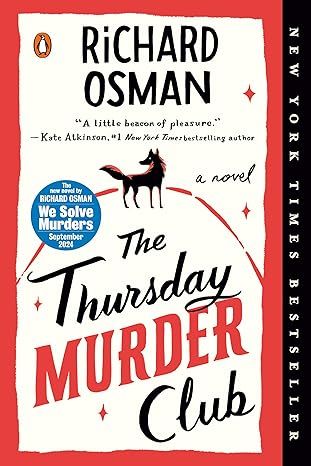
The Thursday Murder Club: A Novel (A Thursday Murder Club Mystery)
4.3
-
155,575
$6.33

Sapiens: A Brief History of Humankind
4.6
-
140,302
$13.49

The Butterfly Garden (The Collector, 1)
4.3
-
88,556
$9.59
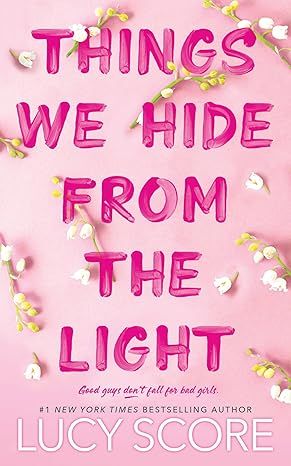
Things We Hide from the Light (Knockemout Series, 2)
4.4
-
94,890
$11.66
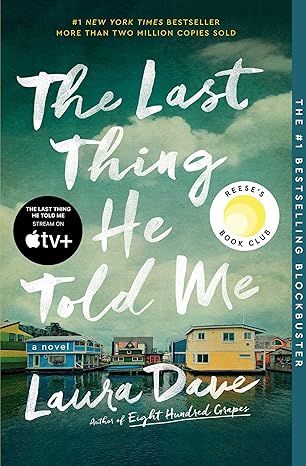
The Last Thing He Told Me: A Novel
4.3
-
154,085
$2.99
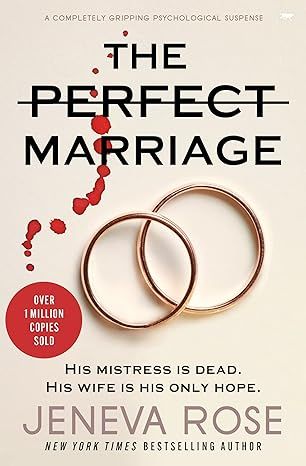
The Perfect Marriage: A Completely Gripping Psychological Suspense
4.3
-
143,196
$9.47

The Coworker
4.1
-
80,003
$13.48

First Lie Wins: A Novel (Random House Large Print)
4.3
-
54,062
$14.99

Mile High (Windy City Series Book 1)
4.4
-
59,745
$16.19

Layla
4.2
-
107,613
$8.99

The Locked Door
4.4
-
94,673
$8.53


